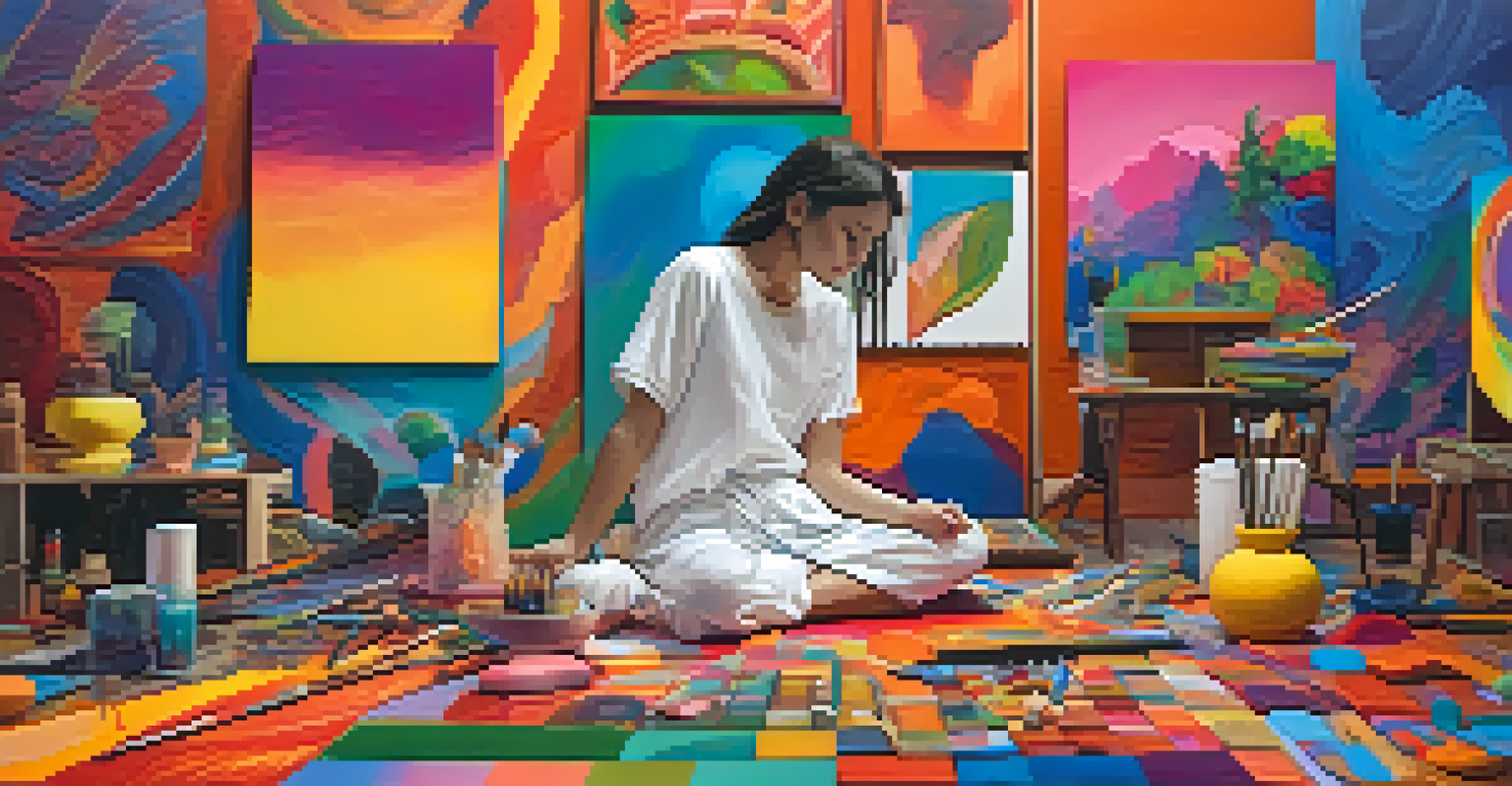How to Effectively Integrate Ayahuasca Experiences in Therapy

Understanding Ayahuasca: A Brief Overview
Ayahuasca is a traditional Amazonian brew known for its psychoactive properties, often used for spiritual and healing purposes. It's made from two primary plants: the Banisteriopsis caapi vine and the Psychotria viridis leaf, which contain DMT, a powerful hallucinogen. Many people report profound insights and emotional releases during ayahuasca ceremonies, making it an intriguing tool for personal growth.
The greatest discovery of my generation is that a human being can alter his life by altering his attitudes.
For some, these experiences can illuminate past traumas or unresolved issues, creating a path toward healing. However, it's crucial to approach ayahuasca with respect and caution, as the intensity of the experience can be overwhelming without proper support. This is where therapy comes into play, providing a safe space to integrate the lessons learned.
Incorporating ayahuasca experiences into therapy can help individuals process their journeys, turning ephemeral insights into lasting change. This process not only enriches traditional therapeutic practices but also allows for a more holistic approach to mental health.
Preparing for Integration: Setting Intentions
Before diving into the integration process, it's essential to establish clear intentions for what you hope to achieve from the ayahuasca experience. Setting intentions acts as a compass, guiding you through the emotional landscape that may arise during and after the ceremony. For example, someone might intend to address feelings of anxiety or to connect more deeply with their authentic self.

By articulating these intentions, individuals can create a framework that enhances the integration process. It allows you to focus on specific themes or insights that emerge, making it easier to discuss these topics in therapy. Moreover, sharing your intentions with your therapist can foster a deeper understanding of your needs and goals.
Ayahuasca and Healing Insights
Ayahuasca is a powerful tool for personal growth, often revealing profound insights and emotional healing during ceremonies.
Intentions can also evolve over time, so it's important to remain open and flexible. As you process your experience, new insights may surface, prompting you to adjust your focus or explore different emotional territories. This adaptability is key to a successful integration.
Finding the Right Therapeutic Support
Not all therapists are equipped to handle the unique challenges and insights that come from ayahuasca experiences. It’s crucial to seek out a therapist who is knowledgeable about psychedelics and has experience in integrating these types of experiences into therapy. This specialized understanding can make a significant difference in ensuring a safe and supportive environment.
What we think, we become.
For example, a therapist with a background in transpersonal psychology might be better suited to help you navigate altered states of consciousness. They can offer tools and techniques to help process intense emotions or visions that may arise during integration sessions. Additionally, they can help you contextualize your experiences within your broader life narrative.
Establishing a strong rapport with your therapist is also vital. A trusting relationship can provide the stability needed to explore challenging emotions that may surface, ensuring that you feel safe to delve into sensitive areas of your psyche.
Creating an Integration Plan: Structure and Support
An integration plan serves as a roadmap for processing your ayahuasca experience. This plan can include regular therapy sessions, journaling, meditation, and other self-care practices that resonate with you. By creating a structured approach, you can systematically address the insights and emotions that arise, making the process feel more manageable.
For instance, journaling immediately after the ceremony can capture raw emotions and thoughts before they fade, providing valuable material to discuss in therapy. Similarly, integrating mindfulness practices can help ground you and maintain connection with your intentions over time. These tools can foster a deeper understanding of your experience and support emotional regulation.
Importance of Setting Intentions
Establishing clear intentions before the ayahuasca experience acts as a guiding compass for the emotional journey and integration process.
Additionally, consider involving supportive friends or community members who understand the ayahuasca journey. Having a support network can help you feel less isolated and more empowered as you navigate the integration process.
Navigating Challenging Emotions Post-Ayahuasca
It's not uncommon for individuals to encounter difficult emotions or memories after an ayahuasca experience. These feelings can surface unexpectedly and might feel overwhelming. Understanding this is a vital part of the integration process, as the aim is not to suppress these emotions but to work through them with compassion and curiosity.
For example, if feelings of sadness arise, it might be helpful to explore what triggered them and how they relate to your past experiences. Engaging with these emotions in therapy can provide insights and facilitate healing. Your therapist can guide you in developing coping strategies, such as grounding techniques or expressive arts, to help process these feelings.
Remember, it's perfectly normal for integration to be a non-linear journey. There might be days of profound clarity followed by moments of confusion or distress. Embracing this ebb and flow is essential in allowing the healing process to unfold naturally.
Utilizing Creative Expression in Integration
Creative expression can be a powerful tool in the integration process, allowing individuals to translate their experienced insights into tangible forms. Activities like painting, writing, or music can serve as outlets for emotions and thoughts that may be hard to articulate verbally. For instance, creating a visual representation of your experience can help cement the lessons learned and provide a lasting reminder of your journey.
Moreover, engaging in creative practices can enhance self-discovery and deepen emotional processing. It encourages you to explore different facets of your experience, providing a unique perspective on your journey. This can be particularly beneficial in therapy, as it opens new pathways for discussion and reflection.
Creating a Supportive Integration Plan
Developing a structured integration plan, including therapy and creative expression, helps process insights and maintain emotional well-being post-ceremony.
Remember that creativity doesn't have to be confined to traditional forms of art. Movement, dance, or even gardening can also be effective ways to express and integrate your experiences. The key is to find what resonates with you and allows for authentic expression.
Building a Sustainable Post-Ayahuasca Practice
To maintain the benefits of your ayahuasca experience, it’s essential to develop a sustainable post-ceremony practice. This might include continued therapy sessions, regular self-reflection, or adopting mindfulness practices like yoga or meditation. These activities help reinforce the insights gained and keep you aligned with your intentions.
Additionally, consider joining community groups or support networks that focus on integration. Connecting with others who have had similar experiences can foster a sense of belonging and provide ongoing support. Sharing your journey can also offer fresh perspectives and insights that enhance your integration process.

Ultimately, the goal is to create a lifestyle that nurtures your well-being and keeps you grounded in your newfound awareness. By combining traditional therapeutic practices with holistic approaches, you can cultivate a rich, fulfilling life that honors your ayahuasca journey.